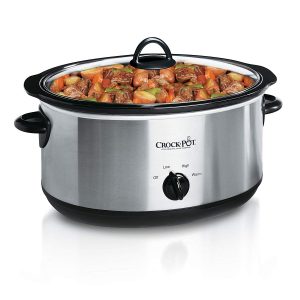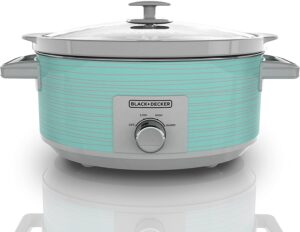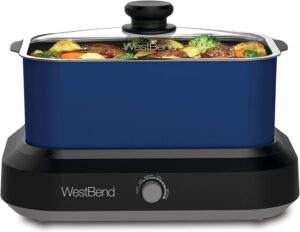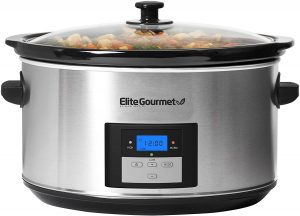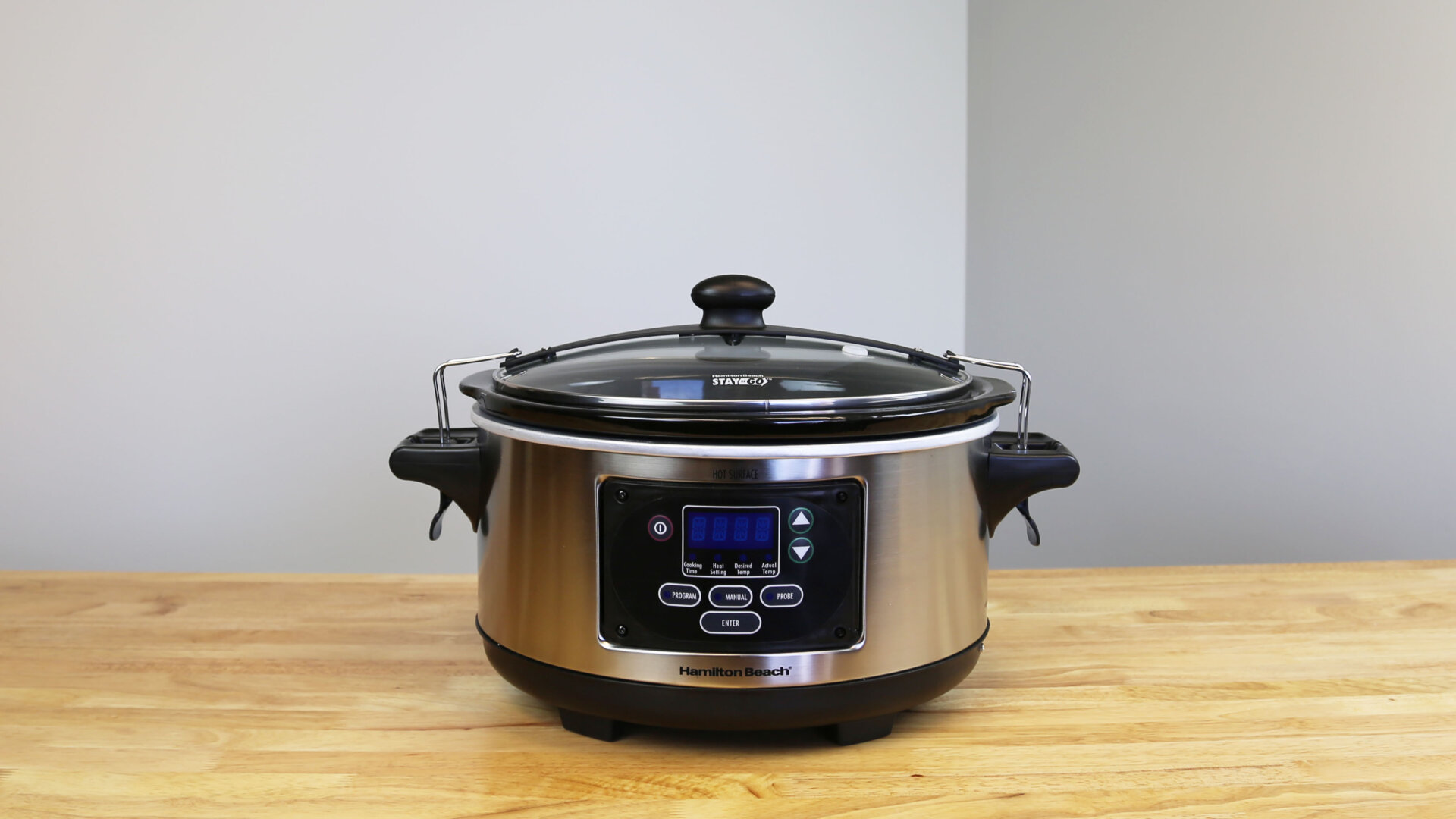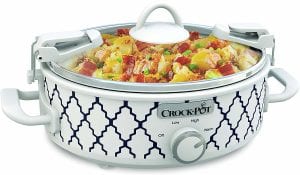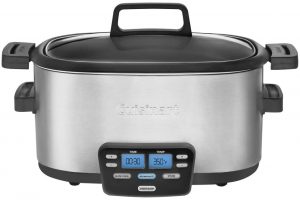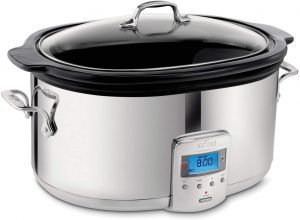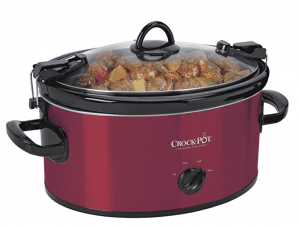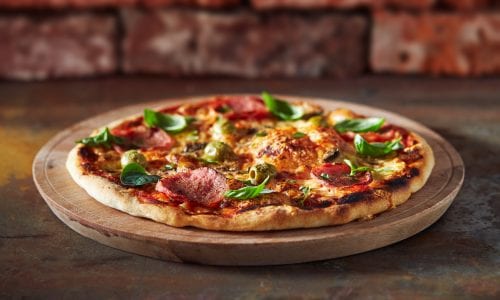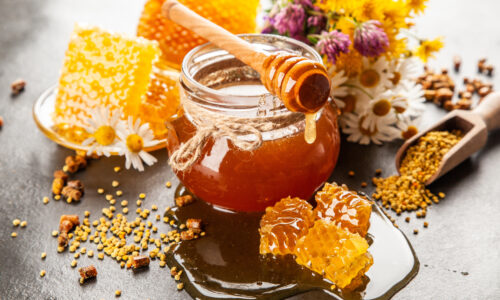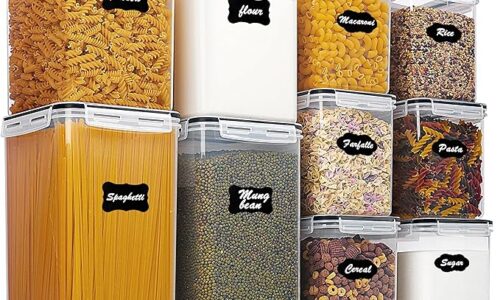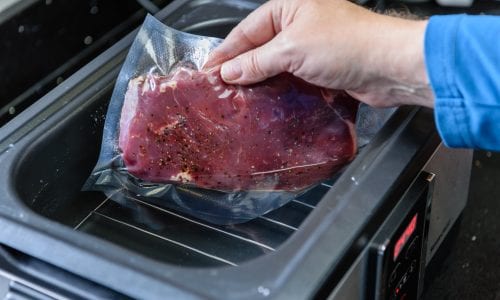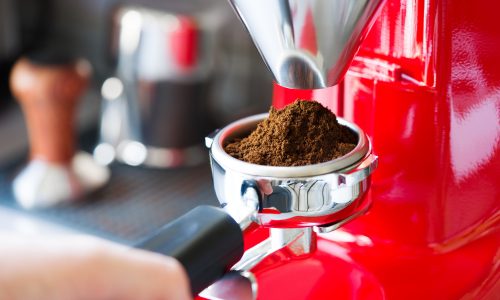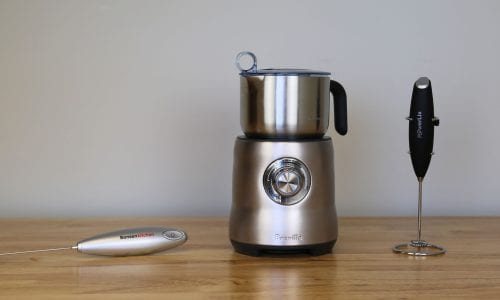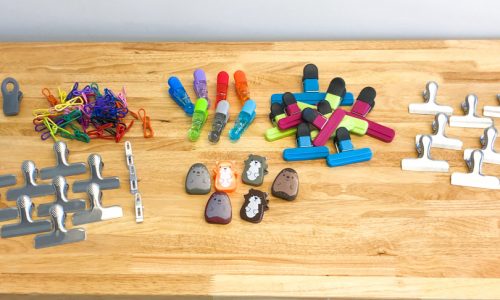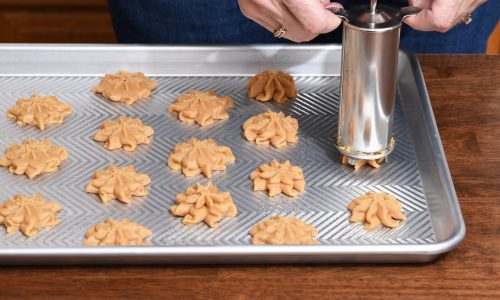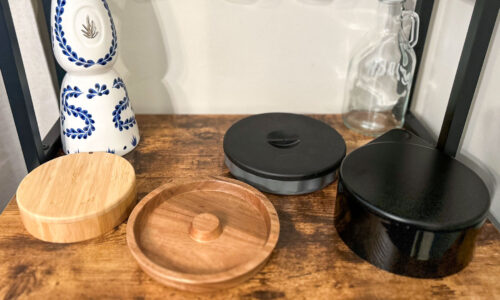The Best Slow Cooker
RECIPES: Check out dozens of slow cooker recipes from our friends at Simplemost
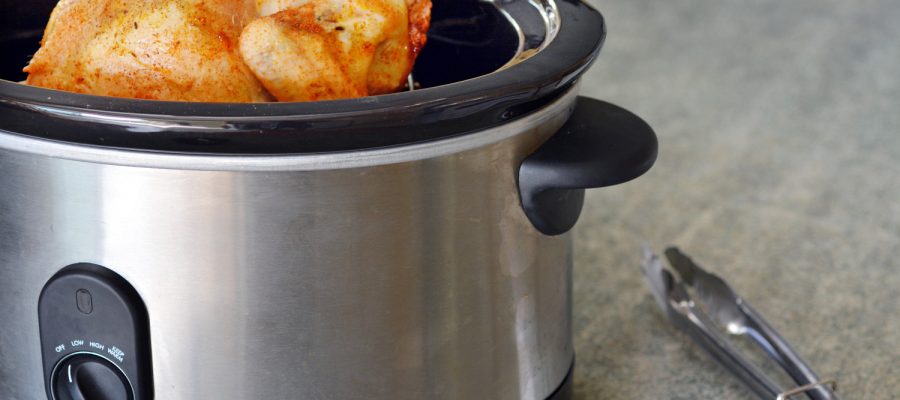
Our Review Process
Don't Waste Your Money is focused on helping you make the best purchasing decision. Our team of experts spends hundreds of hours analyzing, testing, and researching products so you don't have to. Learn more.
Our Picks For The Top Slow Cookers
- 1. Instant Pot Duo Plus Venting Customizable Slow Cooker
- 2. Crock-Pot Digital Automatic Slow Cooker, 6-Quart
- 3. BLACK+DECKER Stoneware Countertop Slow Cooker, 7-Quart
- 4. West Bend Griddle Base Portable Slow Cooker, 5-Quart
- 5. Elite Gourmet MST-900D Programmable Easy Clean Slow Cooker, 8.5-Quart
- 6. Hamilton Beach Clip-Tight Lid Slow Cooker, 6-Quart
- 7. Crockpot Compact Stoneware Slow Cooker, 2.5-Quart
- 8. Cuisinart PSC-350 Stainless Steel Dishwasher Safe Slow Cooker, 3.5-Quart
- 9. All-Clad LCD Screen Slow Cooker, 6.5-Quart
- 10. Crock-Pot Handled Easy-To-Use Slow Cooker, 6-Quart
- 11. Cuisinart PSC-350 Stainless Steel Dishwasher Safe Multi-Cooker, 6-Quart
If you're looking to replace several appliances with just one that can do the job of all, this slow cooker is for you. It works as a steamer, yogurt maker, rice cooker and pressure cooker in addition to serving as a slow cooker. The presets make the machine user-friendly, while the 10 built-in safety features protect the user from accidental burns ...
Lots of ExtrasIncluded with this slow cooker is a complimentary steam rack and an extra sealing ring.
This sleek slow cooker with digital controls is a modern update of a classic. Because of its large capacity, locking lid and big handles, it's perfect for toting to potlucks and cooking for a group. The removable crock can be put in the oven or microwave for convenient reheating. Plus, it's simple to hand wash or pop in the dishwasher.
Easy to UseA programmable slow cooker with a large capacity, big handles and locking lid.
When you prepare a stew in this slow cooker, you'll have enough to feed up to eight people. That makes it perfect for families or small dinner parties. The handy kitchen appliance comes with three heat settings, a glass lid and a built-in lid holder.
Choice of ColorsYou'll find this slow cooker comes in a choice of designs including a teal wave, a silver leaf and a geometric cream.
There isn't anything you can't do with this slow cooker. The base allows you to use the cooker to warm and cook food, but the base itself can also be used as a griddle. Set the base aside and use the cooker on a stovetop or in the oven. You can even get the appliance in a choice of blue, black, red or silver.
Extremely VersatileIncluded with this slow cooker is a handy carry bag for transporting food for family holidays or church potluck dinners.
Buying Guide
Slow cookers are the preferred way to make a delicious, hot meal even when you’re busy and on the go. From soups and stews to meats and even oatmeal, all you have to do is prep your ingredients, dump them into the crock, set it and the slow cooker does the rest.
Slow cookers were first introduced in the 1950s, and many of the basics are still the same. However, there are a variety of different brands, sizes and features available. To get the most out of it and choose the best slow cooker for you, learn about the parts, functions, uses and added extras available in some of the top slow cookers available today.
Every slow cooker has a base that houses the heating unit, a ceramic insert — also called a crock — and a glass lid. Original models from the 1970s and 80s had a dial that could be set to high, low and off. As time went on, some models added an auto-shift feature which would start out high and shift to low over the course of the cooking time. You can still get slow cookers with a dial, like some models, which have basic high, low and warm settings.
A slow cooker heats starting from the base, up into the ceramic insert and then finally into the food. Stoneware is used for the insert because it keeps a constant, even heat. The lid helps traps steam to retain moisture, which is why it’s recommended not to lift the lid during cooking.
One important modernization of the slow cooker available in almost all newer models is the removable crock. The base and stoneware used to be attached, which made slow cookers a huge pain to clean. Now the ceramic insert can be taken out to handwash or put in the dishwasher. Some models even allow you to put the crock in the oven or microwave for reheating purposes.
Another update to new slow cookers is time and heat settings. Many models now have programmable interfaces that go beyond high, low and warm. The Hamilton Beach Set & Forget takes it a step further giving you the option to set a specific cooking time or temperature. Both automatically switch to warm when they’re done.
Even slow cooker lids have seen some improvements. Slow cookers have always been ideal for feeding larger groups and keeping food warm at potlucks, tailgating and other events. But without a tight seal, they were difficult to transport without risking a major spill. Now, slow cookers, like the Hamilton Brach Set & Forget, have locking lids with gaskets making them much easier to tote around, without the worry of making a mess.
Glass lids are also preferable to plastic or metal. Because glass is heavier it should lock in heat and moisture better. Plus, you can see what’s going on inside your pot without taking the lid off!
When choosing a slow cooker you will also want to consider the size. Slow cookers typically come in quart sizes. A smaller unit may be perfect for people with limited space or who only cook for one to two people at a time.
You may want to consider a larger size if you plan to cook for big groups frequently or will be cooking larger cuts of meat. A slow cooker should also always be at least 1/2 to 2/3 full to work properly, so a larger size won’t work if you’re cooking smaller portions.
If you’re looking for extra features you should definitely expect to go up in cost from the standard slow cooker price. If you’re new to using a slow cooker you may want to stick with a more standard model so you can get the hang of it before you spring for more bells and whistles, like hold temp and searing functions.
Lastly, think about how you will use it. If you plan to use your slow cooker to do the majority of cooking you may want to pay for a more robust model. A manual option may be better if you plan to be around while food is cooking so you can check for doneness. If you’ll be using it while being gone for most of the day, a slow cooker with programmable settings would be more ideal. This way, it has the ability to automatically keep food warm if you’re home later than expected or keep cooking even if the power goes out briefly.
The shape can also be a consideration, but most slow cookers these days are oval. If you plan to cook a lot of meats oval is probably best, while round will work well for soups, stews and just about anything else.
What to Look For
- Modern-day slow cookers are fairly easy to clean. Most have removable crocks and some can even be put in the dishwasher. Even so, if you want to make clean up even simpler you can buy liners the go inside the pot before you add your ingredients. After you’re done cooking and eating, just scoop out any leftovers and toss the liner. Clean up done!
- As tempting as it may be, try not to open the lid of a slow cooker unless the recipe requires it during cooking. Every time you open the lid it lets accumulated heat and moisture escape. It also increases cook time by 15-20 minutes every time it’s opened. In most cases, there isn’t a need to stir ingredients, just follow the recipe instructions for how to layer properly for optimal cooking.
- Depending on the recipe it’s usually not necessary to cook ingredients before placing in the slow cooker. Still, many recommend sauteing or browning ingredients in a pan prior to adding it to the crock to help deepen the flavor.
- Always thaw meat and veggies before placing in the slow cooker. Putting frozen items in the cooker will keep the temperature too low and put your food in the danger zone for bacteria growth. Keeping raw foods in the fridge prior to starting your slow cooker is also key to food safety.
- Another important safeguard is using a thermometer to test doneness. The Hamilton Beach Set & Forget has a built-in temperature probe that gives you a readout on the interface. For other models without a feature for checking the internal temperature, you’ll want to use a separate thermometer at the time your recipe says your food should be done. Keep cooking if it’s not over 165 F.
- Always take extra food out of the slow cooker as soon as possible and store in reheatable leftover containers. It’s not safe to use the slow cooker itself for storage or reheating.
- Whether you’re feeding a crowd or prepping a stew you can eat for a week, the budget-friendly benefits of a slow cooker are clear. But did you know that slow cookers also only use as much electricity as a light bulb? Plus, they’re the perfect way to cook inexpensive cuts of meat like beef or pork shoulder because they stay juicy and tender even with long cook times.
- As a general rule of thumb, place harder ingredients like root veggies or potatoes on the bottom layer in the slow cooker and softer items on the top. The bottom will have more moisture and heat for faster cooking.
- Because liquid doesn’t cook off in a slow cooker you don’t need to add too much. Same goes for wine and fat on meat. The alcohol content won’t diminish and the excess fat can cause oil to pool, so it’s a healthy choice to reduce both.
- With any luck, your food should have a deep, rich flavor. You can also always add fresh lemon or lime juice and fresh herbs once it’s done to brighten your dish and add more dimension.
More to Explore
The slow cooker was first sold in the 1950s and was called the Naxon Beanery, after the inventor, Irving Naxon. It was originally marketed as a way to cook beans, chili and stews. Its roots are in the Jewish religious practice of not cooking on the Sabbath. Rival manufacturing bought Naxon Beanery and rebranded it as the Crock-Pot we know and love today in 1972.
The Crock-Pot was initially very popular among women who were joining the workforce in higher numbers at the time. It allowed them to balance work and home by still having a hot meal waiting for their family at the end of the day. It also helped during the oil crisis in the 1970s because slow cookers require about as much power as a light bulb. At their peak, there were eventually 40 different companies making slow cookers.
As time has gone on, the convenience factor is still attractive to families and single working people alike. Now, slow cookers are used for everything from morning oatmeal to potlucks and even tailgating. In 2002, Betty Crocker Kitchens found that 80.6% of U.S. households had slow cookers.


